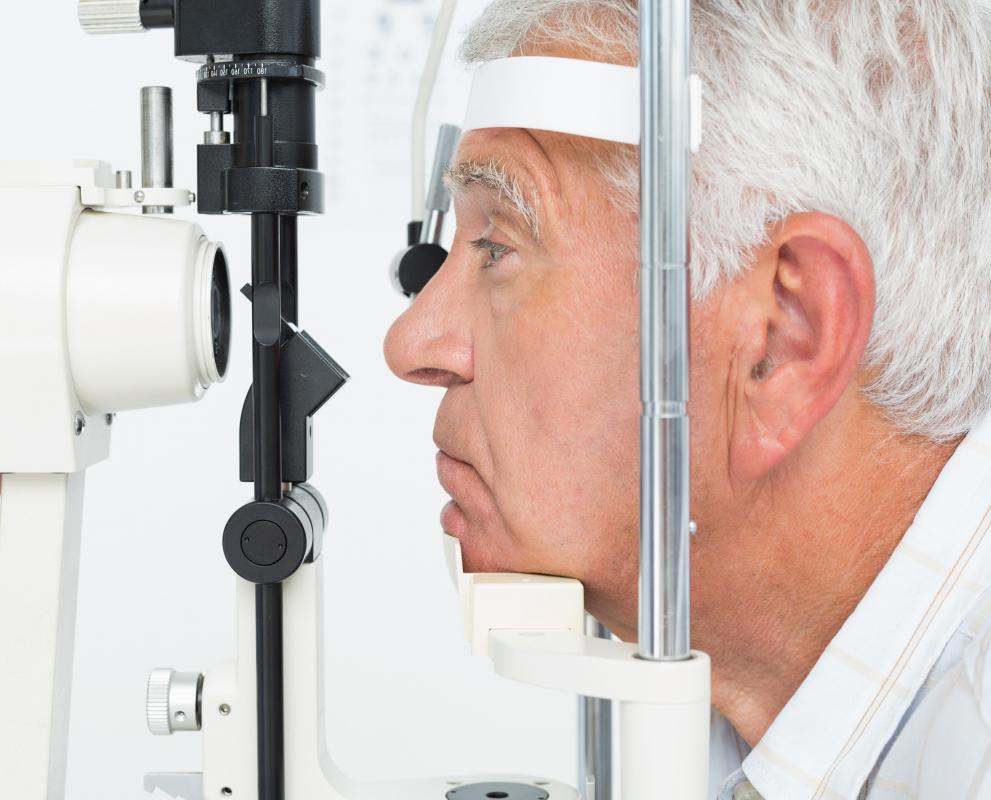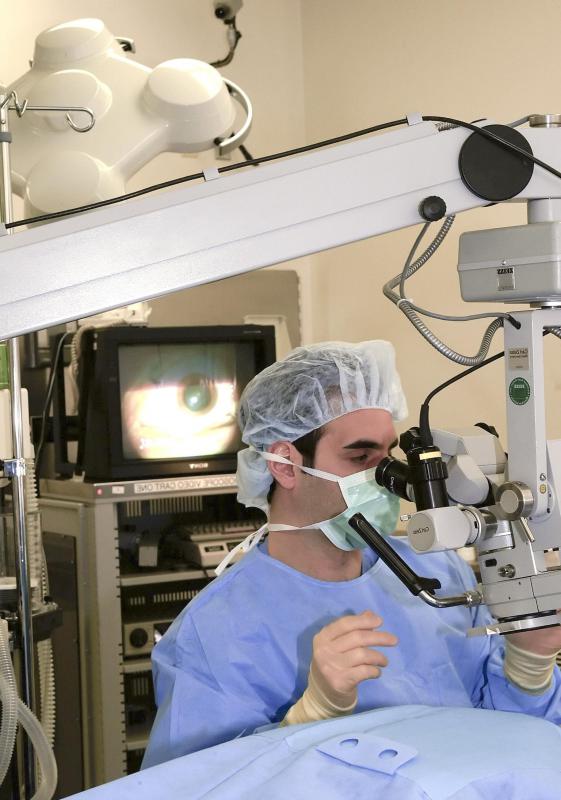At TheHealthBoard, we're committed to delivering accurate, trustworthy information. Our expert-authored content is rigorously fact-checked and sourced from credible authorities. Discover how we uphold the highest standards in providing you with reliable knowledge.
What is a Posterior Subcapsular Cataract?
A posterior subcapsular cataract is a form of opacity that affects the back side of the eye's lens. Primarily affecting one’s reading and night vision, this condition usually accompanies age-related lens degeneration, but may affect anyone of any age. Treatment involves surgery to excise the affected lens and the positioning of an artificial lens to restore proper vision. A posterior subcapsular cataract that remains untreated can result in significant vision impairment and, in some cases, blindness.
Diagnosing this type of cataract initially involves a standard eye examination to measure visual acuity. An ophthalmologist will ask the individual to read from a standardized vision chart to detect any visual impairment. Dilation and magnification may also be used to examine the inner eye and evaluate any anomalies that may be present, such as cataract-related fogging of the lens.

The eye's lens functions as the main channel through which light is transmitted to form retinal images. With time, or injury, the lens can lose its flexibility, causing the light that passes through it to fracture and split. The progressive loss of tone leads to a clouding and thickening of the lens that further distorts and dims the images one sees.

Usually, a history of farsightedness precipitates the onset of posterior subcapsular cataract formation. Individuals with chronic conditions, such as diabetes, are considered to possess an increased risk for subcapsular cataracts. Activities that adversely affect arterial health and elevate blood pressure, such as smoking or excessive alcohol consumption, may also place one at risk for cataracts. Additional factors that may play a role in cataract development include eye trauma, long-term steroidal medication use, and radiation exposure.

People with a subcapsular cataract may initially notice that colors appear muted and images become increasingly blurred. Nighttime driving often becomes difficult due to the prevalence of halos that surround artificial sources of light, such as headlights. With time, one’s ability to read materials at arm's length becomes challenging. The progression of one’s posterior subcapsular cataract symptoms is generally monitored for pronounced changes to his or her vision.

Eventually, surgery becomes necessary to correct a posterior subcapsular cataract. When the cataract matures to significantly threaten one’s sight, outpatient cataract surgery is usually performed. During the procedure, an ophthalmologist will excise the opaque lens and position an artificial one in its place. Individuals are usually able to resume normal, everyday activities within a few days without restriction. Though the risk for retinal detachment is of most concern, additional risks can include infection and secondary cataract formation.
AS FEATURED ON:
AS FEATURED ON:















Discussion Comments
I am 35 and was just diagnosed with this during a routine eye exam. My night vision has been getting more blurry even though my prescription hadn't changed much over the past couple years and my doctor found this after dilation.
It's good to know it sounds pretty routine, but I am still slightly freaked about it.
@feruze-- I'm not sure, but I know that LASIK is not usually performed on someone who has posterior subcapsular cataract, simply because it's not necessary.
Posterior subcapsular cataract causes eyesight issues like near-nearsightedness or astigmatism. But these issues resolve after cataract surgery.
Can LASIK eye sight correction surgery lead to cataracts, including posterior subcapsular cataract?
My eye doctor said that there is a small chance but I want to know what the risk is. I do have a family history of cataracts and I want to know what I'm getting myself into.
My great-grandmother lived past ninety, but her left eye was blind from posterior subcapsular cataract. She waited too long to have cataract removal and by then, it was too late. So this condition can definitely be serious.
Post your comments